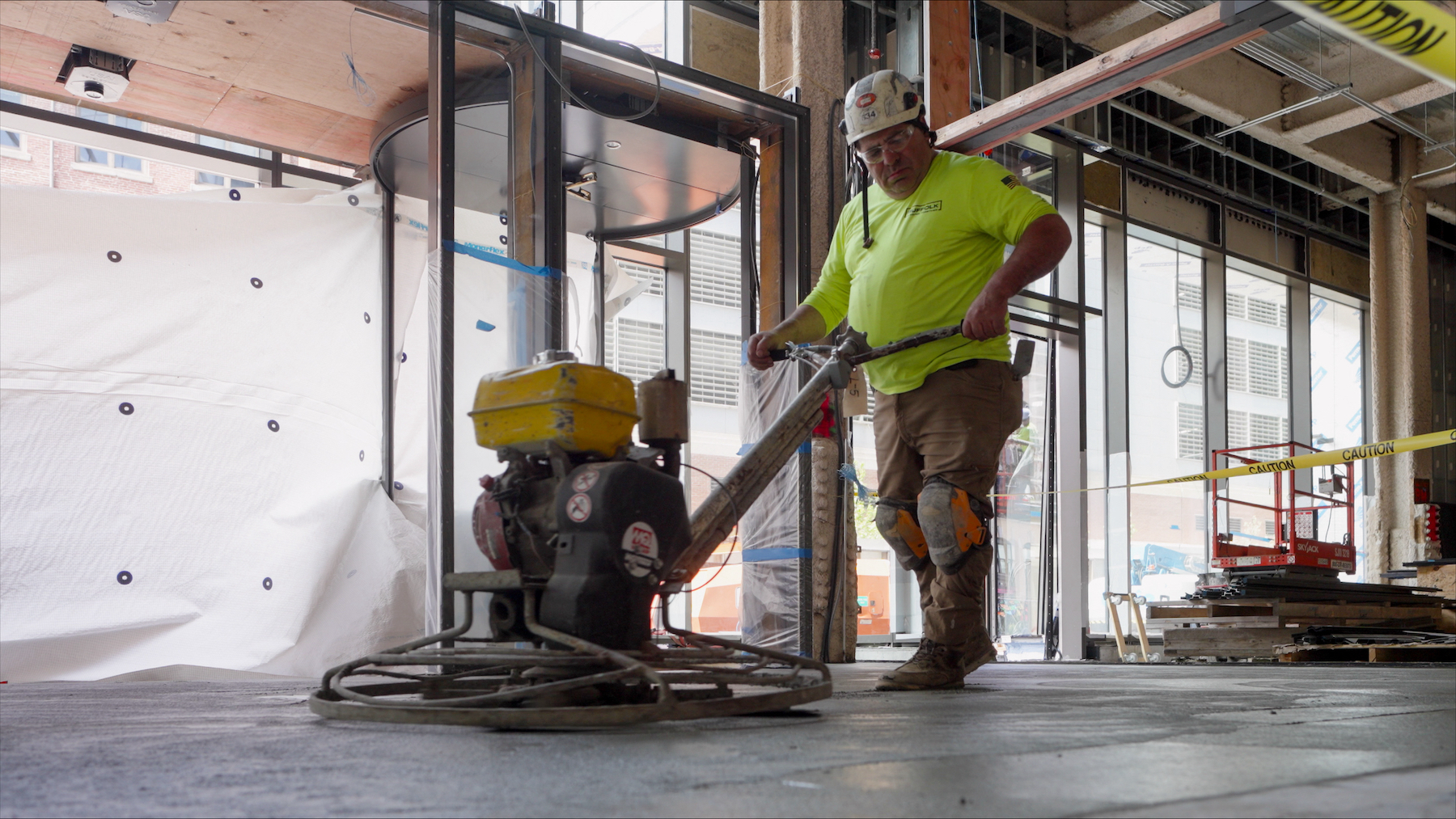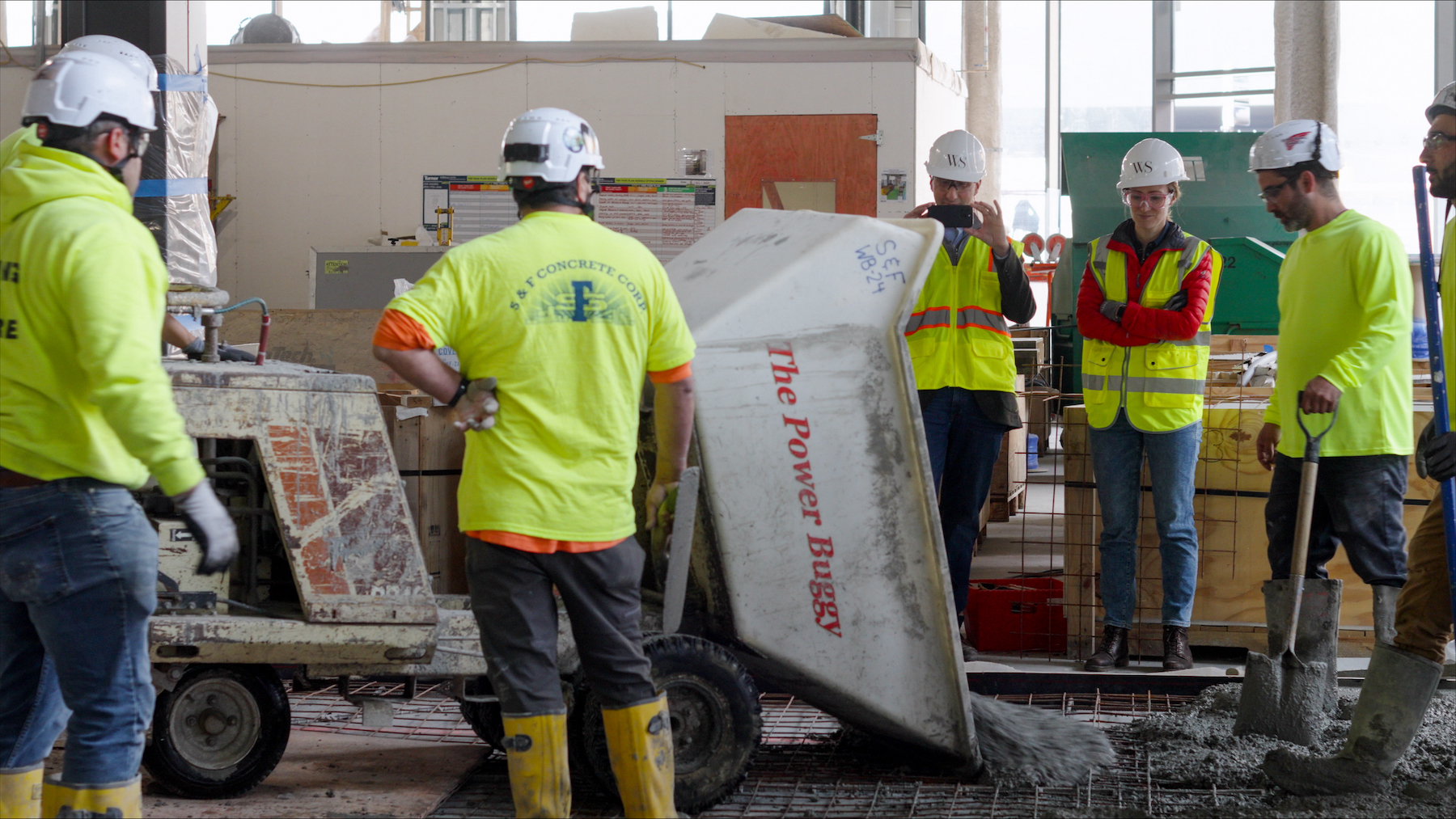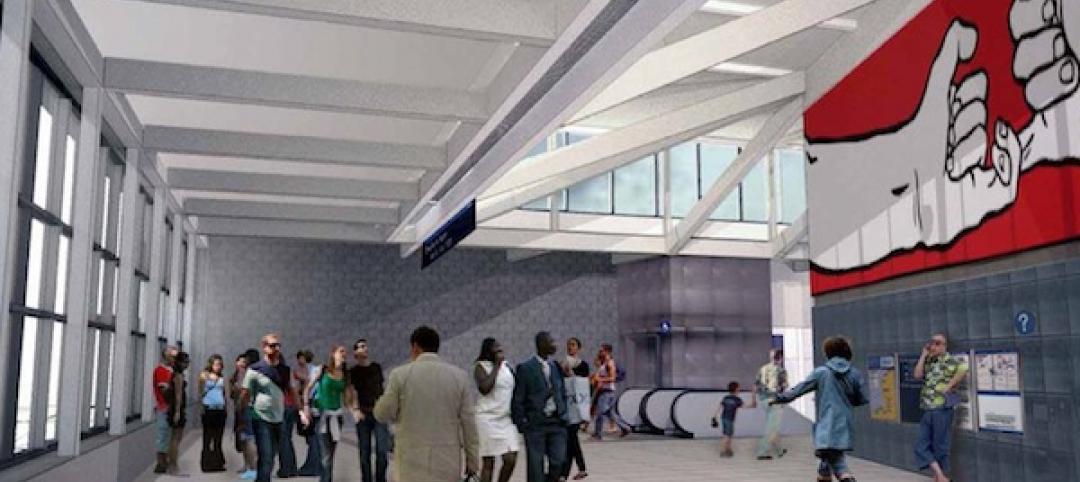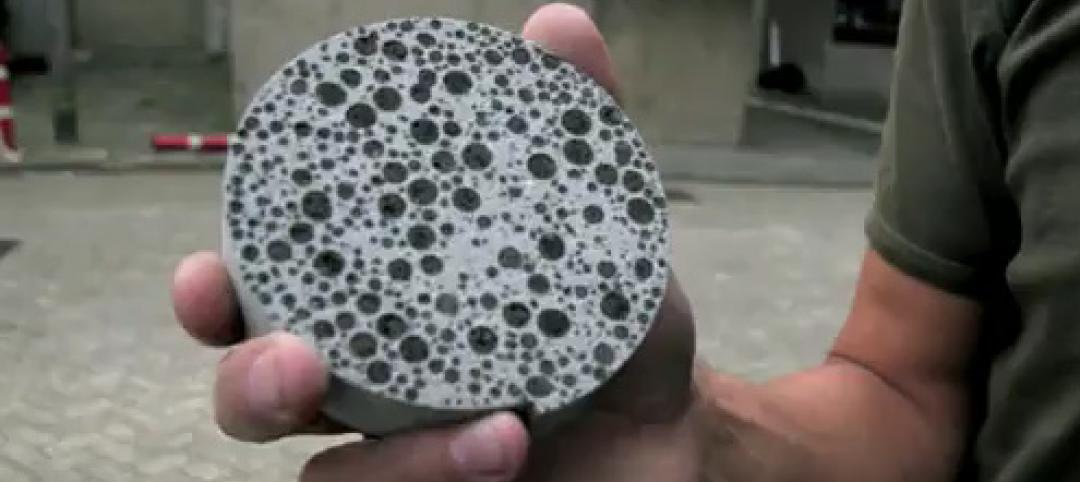Earlier this month, a 575-sf patch of concrete was poured as part of a public space known as the Paseo, inside One Boston Wharf Road, a 707,000-sf 17-story building in Boston’s Seaport district that is scheduled for completion later this year. Amazon will be the building’s sole tenant.
What makes this newsworthy, you ask? Well, for one thing, One Boston Wharf Road, developed by WS Development, will be Beantown’s largest Net Zero Carbon office building. Its goal is to reduce greenhouse gas emissions by more than 90 percent below code requirements and eliminate 5.1 million pounds of CO2 annually. (WS Development recently announced that it had purchased renewably generated electricity for all electric power used by its Seaport portfolio.)
Also see: AGC releases decarbonization playbook to help assess, track, reduce GHG emissions
The concrete installation represents the first commercial application of low-carbon cement manufactured by Sublime Systems, a business that the Massachusetts Institute of Technology spun out as an enterprise in 2010.
Production of cement currently accounts for 8 percent of global CO2 emissions, mostly caused by the intense temperatures required to make cement clinker from limestone, a common ingredient in concrete. Sublime Systems, which is based in Somerville, Mass., claims that its Sublime Cement, the product's marketing name, avoids traditional cement’s major emissions sources, limestone feedstock and fossil-fueled kilns, by applying electrochemistry to extract cementitious ingredients from non-carbonate materials, without degrading the properties that make concrete the most-used building material worldwide.
Sublime Systems’ technology makes ASTM C1157-compliant cement, a drop-in replacement for Portland Cement in concrete. The company, which was incorporated four years ago, has raised more than $140 million from tech investors, and cooperative agreements with several U.S. Department of Energy programs. The company’s pilot plant has a 250-ton annual production capacity, and Sublime Systems is developing a 30,000-ton capacity commercial facility that will open in Holyoke, Mass., in early 2026.
“We and Sublime share the same vision and mission,” said Yanni Tsipis, a Senior Vice President at WS Development and a lecturer at the MIT Center for Real Estate. “We have an opportunity to showcase the most forward—thinking low-carbon building technology on the planet in the public space, at the heart of the building. This partnership epitomizes the value of technology transfer from incubator to industry.”
Educating the public about lowering carbon

The floor of the Paseo, in which Sublime Cement is installed, will be marked with educational material explaining the significance of decarbonized cement in the battle against climate change. The Paseo will lead to a new 1.5-acre park called The Rocks at Harbor Way that will be the focal point of a one-third-mile promenade that connects to the water’s edge. (James Corner Field Operations came up with this concept for Harbor Way.) One Boston Wharf Road will feature 77,000 sf of retail space.
One Boston Wharf Road is adjacent to 11 Harbor Way, a 525,000-sf, 17-story office tower that WS Development completed in the spring of 2022.
Related Stories
High-rise Construction | Jul 9, 2013
5 innovations in high-rise building design
KONE's carbon-fiber hoisting technology and the Broad Group's prefab construction process are among the breakthroughs named 2013 Innovation Award winners by the Council on Tall Buildings and Urban Habitat.
| May 14, 2013
Paints and coatings: The latest trends in sustainability
When it comes to durability, a 50-year building design ideally should include 50-year coatings. Many building products consume substantial amounts of energy, water, and petrochemicals during manufacture, but they can make up for it in the operations phase. The same should be expected from architectural coatings.
| Apr 23, 2013
Building material innovation: Concrete cloth simplifies difficult pours
Milliken recently debuted a flexible fabric that allows for concrete installations on slopes, in water, and in other hard to reach places—without the need for molds or mixing.
| Apr 19, 2013
Must see: Shell of gutted church on stilts, 40 feet off the ground
Construction crews are going to extremes to save the ornate brick façade of the Provo (Utah) Tabernacle temple, which was ravaged by a fire in December 2010.
| Mar 4, 2013
Legendary structural engineer Gene Corley passes away at 77
CTLGroup, an expert engineering and materials science firm located in Skokie, Illinois, is saddened by the news that W. Gene Corley, Ph.D., S.E., P.E., Senior Vice President, died on March 1, 2013 after a brief battle with cancer.
| Feb 25, 2013
Turner employs rare 'collapsible' steel truss system at Seattle light rail station
To speed construction of the $110 million Capitol Hill Station light-rail station in Seattle, general contractor Turner Construction will use an unusual temporary framing method for the project's underground spaces.
| Feb 22, 2013
Dutch team's 'bioconcrete' can heal itself
Two researchers from Delft Technical University in Holland have developed a self-healing cement that can stop microcracks from forming in concrete.
| Feb 20, 2013
Group of West Coast civil engineers developing building standards for tsunamis
A group of civil engineers from around the western U.S. is developing additions to the building code to address the threat of a tsunami.
| Aug 30, 2012
Holcim (US) announces new Deputy Chief Executive Officer
Ruiz began his career with the Holcim Group in 1986 as electrical supervisor with Holcim Apasco, Mexico, later becoming plant manager.
| Jun 1, 2012
New BD+C University Course on Insulated Metal Panels available
By completing this course, you earn 1.0 HSW/SD AIA Learning Units.

















